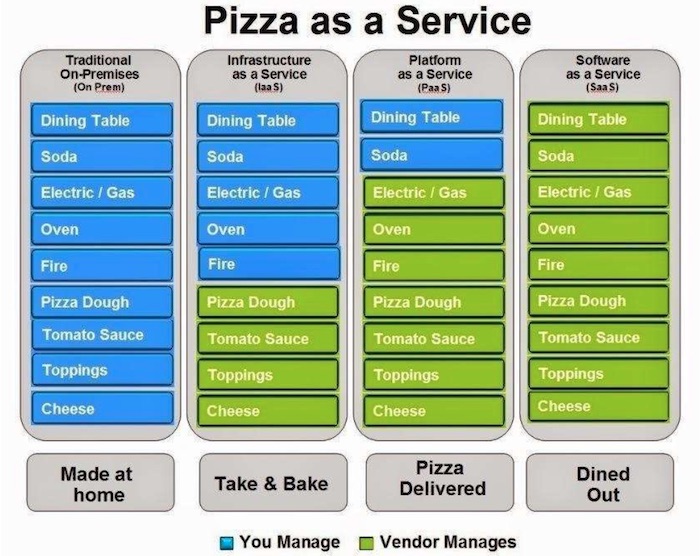What is Software-as-a-Service (SaaS) and what are the benefits?
| Sieuwert van Otterloo |
Quality
Software

Many software development companies that are transitioning to Software-as-a-Service (SaaS) or considering to do so. In this post we explain what SaaS is and what the potential benefits are. In later posts we will dive further into the technical changes needed to make SaaS work.
SaaS-definition
Software can be delivered in two ways: packaged or as-a-service (SaaS).
- If an organisation buys packaged software, the customer pays a license fee, gets a copy of the software, and must install the software on hardware chosen by the customer.
- Under SaaS, the software provider installs the software and provides an online account to the customer.
SaaS is often conflated or confused with Cloud, because SaaS and cloud are often combined. Both became popular at the same time. Cloud just means that the software is not hosted at the client’s premise and can only be accessed online. From the customer’s perspective, SaaS-software is similar to cloud software. From the SaaS-provider perspective, it is a different aspect. The provider can host it on their premise or select a cloud provider.
Technical, financial and legal differences
For packaged software providers, deciding to become a SaaS provider might sound like a minor change, but it is a strategic choice. There are financial, technical and legal implications. Many companies therefore create multi-year Cloud and SaaS IT strategies before changing their delivery model. Some key differences are:
Technical:
- SaaS software is typically designed for one brand of hardware and infrastructure. Packaged software typically must work with different types of hardware and infrastructure
- Technical maintenance and monitoring (e.g. whether there is enough storage) is a customer responsibility for packaged software. In SaaS, only the software provider has access
- Under SaaS it is common that infrastructure and databases are shared between customers. With packaged software, each customer has a dedicated, isolated hardware setup.
- SaaS-software can be used from any location that has a good internet connection. Some time-critical software has higher performance when used on-premise. Some software can only be used on-premise due to high bandwidth needs or realtime constraints. This category however is becoming smaller as cloud infrastructure and internet technology is improving.
- SaaS software can be frequently updated by SaaS providers, sometimes without informing or asking permission from the customers. This does require a very thorough testing approach with automated testing and automated releases.
Financial:
- Packaged software often has a fixed license fee or fixed fee per year since it is difficult for SaaS providers to monitor use. SaaS software often has a pay-per-use or pay-per-user license model.
- Under certain conditions, SaaS saves money for both parties: there are benefits of scale and possible innovations that can make the operational maintenance costs lower for the vendor.
- Cost flexibility: Customers have flexible costs in line with their own value/income, and SaaS providers have recurring revenue.
Legal:
- Under SaaS the software will stop working if the provider ceases operation. It is therefore necessary for customer to check the financial stability of the provider and take additional business continuity measures.
- Under SaaS, the software provider has access to customer data. This means that the provider must have a detailed security policy, e.g. based on ISO 27001. The provider and customer must have a data processing agreement to comply with GDPR.
SaaS explained using transport and pizzas
The ‘as-a-service’ methodology can be applied to anything, not just software. To make a transportation analogy, packaged software is like buying a car: the car seller does not know how the car is used after it is sold and does not have access to the car unless the customer returns for service. SaaS software is more like a taxi service. The customer does not have to worry about fuel, but remains dependent on the driver and the provider knows where the car is at all times.
Another example is pizza as a service. The illustration below was taken from this episerver blog post, was created by Albert Barron, a software architect at IBM. It shows that there is often a stack of activities that can be split between customer and supplier. ‘Made at Home’ would correspond to either on premise, or even making your own software if you also take the software development in discussion. Dined out corresponds to software as a service.
Benefits of SaaS-software
SaaS has become popular because it is often a more efficient model. There are benefits for both suppliers and customers. Software providers benefit from:
- Only having to maintain and test one version of the software for one hardware setup and infrastructure model. This is a huge benefit since many software developers need to maintain many different versions, leading to double work and developer dissatisfaction.
- Using data on how the software is used (e.g. which screens and features are used most often, what errors appear), one can design better software. Software suppliers scan apps data science to really understand how users use their software
Software users benefit from:
- Low to no upfront costs: there is no need to buy/rent hardware, and they can pay per month.
- No need for operational and technical maintenance. The operations and maintenance fees from the SaaS-provider are often lower than what the customer would have to pay to organise the same level of service, since the SaaS provider has benefits of scale from operating the same software for many customers.
SaaS uptake
Small companies have been enthusiast SaaS-users, since it can be provided at Ikea-level pricing for customers that otherwise would not have IT solutions. Large international enterprises have been initially slow to adopt SaaS-software. They already had application maintenance departments and were reluctant to give providers access to confidential data. In some cases, regulations also required utility companies and financial companies to have full and exclusive control over IT systems. Salesforce was one of the first SaaS-only software solutions to gain acceptance from large enterprises. Since the success of SalesForce, many other companies have followed. Other companies like Exact (financial software) offer both SaaS and on-premise solutions.
In theory, a software provider can offer any software product as Saas by making only organisational changes: any packaged software can be provided as-a-service by just adding hosting and changing the pricing. In practice however, software must be designed differently in order to fully capture the benefits from the SaaS-model.
Image credit: Clem Onojeghuo via unsplash
Dr. Sieuwert van Otterloo is a court-certified IT expert with interests in agile, security, software research and IT-contracts.


